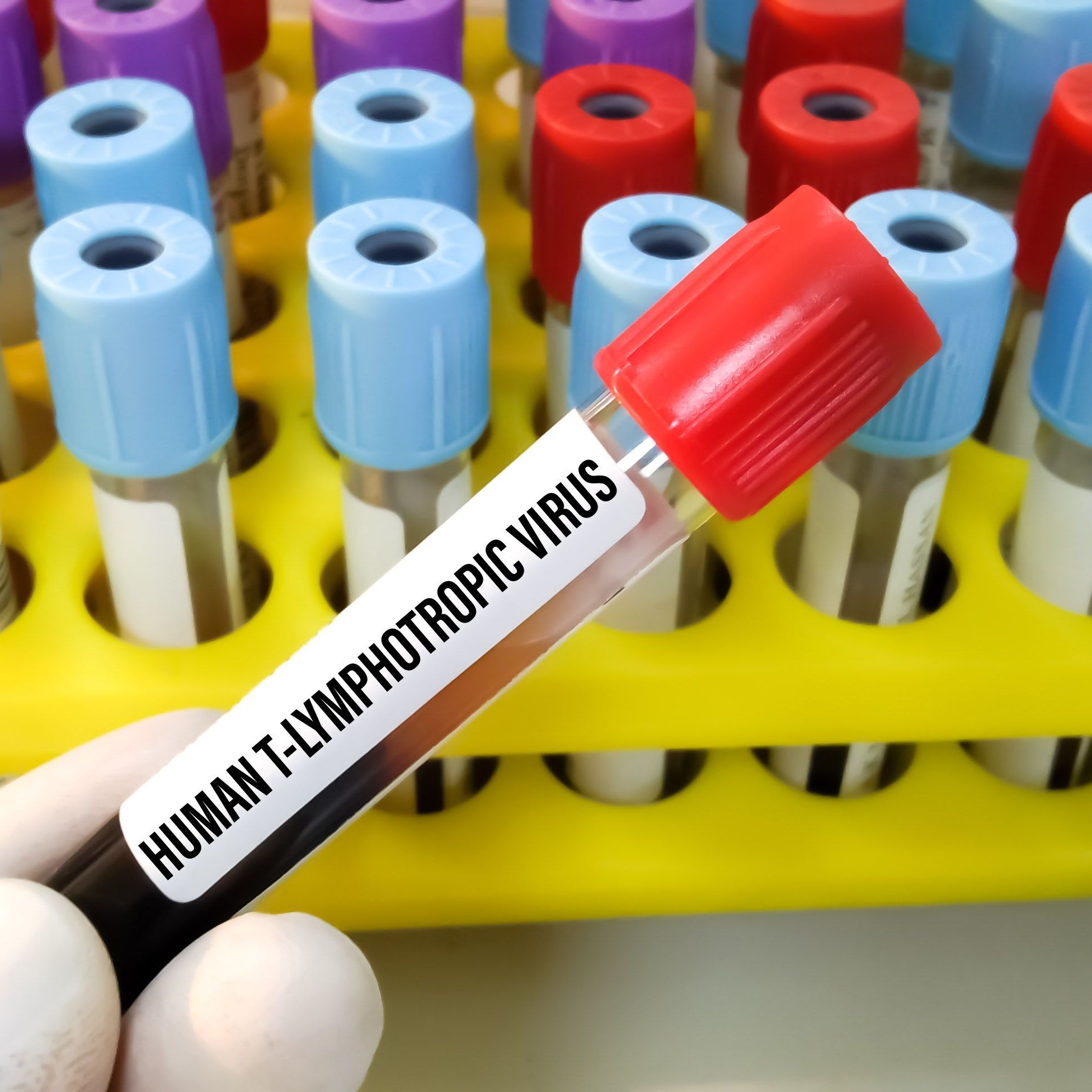
What is Human T-Lymphotropic Virus 4?
The Human T-lymphotropic virus 4, known as HTLV-4 for short, belongs, like all HTLVs, to the family of retroviruses that can trigger leukaemia and other clinical pictures in humans. The HTLV-4 was first discovered in 2005 in hunters living in Africa with particularly close contact to primates. The researchers at the time reported that these were probably limited cases of infection. The virus would not establish itself in the human population. In addition, HTLV-4 is an outdated name for the known HIV types 1 and 2.
What is the structure of the human T-lymphotropic virus 4?
Since HTLV-4 belongs to the genus of retroviruses, it is structured like the other members of the family. Mostly, the RNA is single-stranded and the virus is surrounded by a protein shell called a capsid. This unit is also called a nucleocapsid and, as with all other viruses, can be free or surrounded by a membrane. The HTLV-4 , like all other retroviruses, needs the organism of a host, in order to reproduce, because they have no metabolism of their own and thus cannot be called living organisms.
How does the human T-lymphotropic virus 4 reproduce?
As as the other retroviruses, the nucleic acid of THLV-4 is inserted into the genome of the T cells after transformation into DNA. In this way, the regulation of the cell cycle is so severely impaired that the infected lymphocyte profiles uncontrollably. Via this pathway, HLV-4 can cause leukaemia. For this reason, the HTLV- 4 is also counted among the group of oncoviruses.
How is the human T-lymphotropic virus 4 transmitted?
The HTLV-4, like all human T-lymphotropic viruses, are transmitted via direct contact with contaminated body fluids. In certain regions of Japan, HTLV-4 as well as the other HTLV is epidemic, which means that more than 30 % of the population has antibodies against the specific virus type.
Just like the HI viruses , the HTLV-4 are often transmitted via the route of unprotected sexual intercourse . Very rarely, transmission occurs due to organ donations or contaminated syringes. If a pregnant woman carries HTLV-4, there is a risk that she will transmit the virus to her child during birth or breastfeeding.
What diseases are caused by the human T-lymphotropic virus 4?
Among the diseases that are triggered by HTLV-4 are mainly the T-cell leukaemias and the B-cell leukaemias as well as the non-Hodgkin lymphomas.
T-cell leukaemias:
This form of leukaemia is particularly common in the Japanese region, where cases of HTLV-4 are most prevalent. T-cell leukaemia progresses either as leukaemia or as an extremely aggressive non-Hodgkin's lymphoma. The disease is predominantly characterised by the presence of transformed, malignant T lymphocytes.
B-cell leukaemia:
B-cell leukaemia is a disease of the so-called precursor cells of B-lymphocytes. As a rule, this disease already occurs in childhood. The spread of the malignant cells in the organs, primarily in the bone marrow, leads to a displacement of the still healthy blood cells.
Non-Hodgkin's lymphoma:
This is a heterogeneous group of cancers that originate from the cells of the lymphatic system. These are called lymphocytes. Since lymphatic tissue is found throughout the body, the disease can also develop anywhere in the body.
What are the symptoms of human T-lymphotropic virus 4?
An infection with the human T-lymphotropic virus 4 usually makes itself felt through flu-like symptoms, which means that the following symptoms initially occur :
If a T-cell leukaemia is present , there are usually accompanying symptoms such as night sweats and weight loss. Often there is a strong enlargement of the spleen. Enlargement of the liver and lymph nodes is rarely the case in T-cell leukaemia. In the case of B-cell leukaemia, there are signs of illness such as paleness, dullness and a very high susceptibility to infections. In the case of non-Hodgkin's lymphoma, anaemia, loss of appetite and sometimes depressive moods occur for no apparent reason.
How is Human T-Lymphotropic Virus 4 diagnosed?
The HTLV-4 can be detected using serum, EDTA blood, skin biopsies, bone marrow and tissue from the lymph nodes. Finally, reliable detection is then carried out by a PCR test.
If an infection with HTLV-4 is detected, those affected must adhere to the following:
- Ban on blood donations and organ donations,
- Education about the possibility of transmitting the virus through unprotected sexual intercourse,
- Babies of infected mothers should not be breastfed.
How is the human T-lymphotropic virus 4 treated?
Depending on the symptoms of the person affected, the type of therapy varies. The golden choice is a combined therapy with the reserve transcriptase inhibitors zidovudium or lamivudine with interferon alpha. These drugs are taken for 6 to 12 months . Valproic acid may also be given. This should further reduce the multiplication of the virus.
How can human T-lymphotropic virus 4 be prevented?
The following are considered effective and safe preventive measures to prevent HTLV-4:
- Infected mothers should not breastfeed their babies,
- Drug users should not share their needles or syringes with others.
